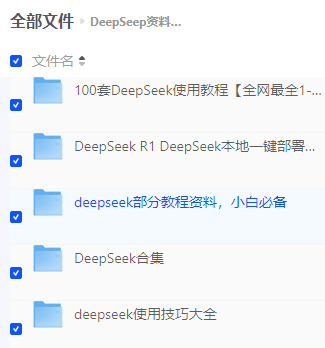目标导向的强化学习:问题定义与 HER 算法详解—强化学习(19)
目录
1、目标导向的强化学习:问题定义
1.1、 核心要素与符号定义
1.2、 核心问题:稀疏奖励困境
1.3、 学习目标
2、HER(Hindsight Experience Replay)算法
2.1、 HER 的核心逻辑
2.2、 算法步骤(结合 DDPG 举例)
2.2.1、步骤 1:收集原始经验
2.2.2、步骤 2:重构经验(核心!)
2.2.3、步骤 3:替代目标生成策略
2.2.4、步骤 4:策略更新
2.3、 为什么 HER 有效?
2.4、公式总结
3、通俗理解
4、完整代码
5、实验结果
1、目标导向的强化学习:问题定义
目标导向的强化学习(Goal-Conditioned Reinforcement Learning)是一类让智能体通过学习策略,从初始状态达到特定目标的任务。与传统强化学习不同,这类任务的核心是 “目标”—— 智能体的行为需围绕 “达成目标” 展开,而目标本身可能随任务变化(如 “机械臂抓取 A 物体”“机械臂抓取 B 物体” 是两个不同目标)。
1.1、 核心要素与符号定义
- 状态(State):环境的观测信息,记为
(
是状态空间)。例如:机械臂的关节角度、物体的坐标。
- 目标(Goal):智能体需要达成的状态,记为
(
是目标空间,通常与状态空间重合或相关)。例如:机械臂需抓取的物体坐标。
- 动作(Action):智能体的行为,记为
(
是动作空间)。例如:机械臂关节的旋转角度。
- 转移函数:状态 - 动作对到下一状态的映射,记为
(P 是状态转移概率)。
- 奖励函数:衡量 “当前状态与目标的差距”,记为
。目标导向任务的奖励通常仅与 “状态是否接近目标” 相关,与动作间接相关。
1.2、 核心问题:稀疏奖励困境
目标导向任务的奖励函数通常是稀疏的:仅当状态 s 与目标 g 几乎一致时,才给予正奖励;否则奖励为 0 或负值。 奖励函数示例(机械臂抓取任务):

- 智能体在绝大多数尝试中(如 99% 的交互)都得不到正奖励,无法判断 “哪些动作有助于接近目标”;
- 策略更新缺乏有效信号(梯度难以计算),学习效率极低,甚至无法收敛。
1.3、 学习目标
目标导向强化学习的目标是学习一个目标条件策略 ,使得在策略引导下,智能体从任意初始状态 \\(s_0\\) 出发,通过执行动作序列
,最终达到目标 g 的概率最大化。

2、HER(Hindsight Experience Replay)算法
HER 算法是解决目标导向任务中稀疏奖励问题的经典方法,核心思想是:从 “失败经验” 中 “事后重构” 有效奖励信号—— 即使智能体没达成原定目标,也能通过修改目标,将 “失败轨迹” 转化为 “成功轨迹”,从而提取学习信号。
2.1、 HER 的核心逻辑
假设智能体在一次交互中,原定目标是 g,但实际轨迹为,最终状态
(失败)。 HER 的关键操作是:从轨迹
中选一个状态
作为 “替代目标”
,此时轨迹
对于新目标 \\
是 “成功的”(因为
可能接近
),从而可计算有效奖励。
2.2、 算法步骤(结合 DDPG 举例)
HER 通常与离线强化学习算法(如 DDPG)结合使用,流程如下:
2.2.1、步骤 1:收集原始经验
智能体与环境交互,收集轨迹并存储到经验回放池 。每条经验是一个五元组:
其中
是基于原定目标 g 的奖励(可能为 0)。
2.2.2、步骤 2:重构经验(核心!)
对回放池中的每条原始经验 e,HER 通过替代目标生成策略选一个新目标 ,重构出一条 “虚拟成功经验”
:
其中
是基于新目标
的奖励(此时可能为正,因为
来自轨迹,
可能接近
)。
2.2.3、步骤 3:替代目标生成策略
HER 定义了 4 种常用的替代目标生成策略(以轨迹 为例):
- Final:
(选最终状态);
- Future:
,其中
(选未来状态);
- Random:
,其中
(随机选一个状态);
- Episode:
从同回合的其他轨迹中随机选一个状态(适用于多目标任务)。
2.2.4、步骤 4:策略更新
将原始经验 e 和重构经验 一起放入回放池,用离线算法(如 DDPG)更新策略。 以 DDPG 的 Critic 网络更新为例:

2.3、 为什么 HER 有效?
- 解决稀疏性:通过重构经验,将 “0 奖励” 转化为 “正奖励”,使奖励信号密集化;
- 利用失败经验:原本无用的失败轨迹被转化为有效学习样本,提高数据利用率;
- 通用兼容:HER 是 “经验回放增强技术”,可与 DDPG、SAC 等多种算法结合,无需修改算法核心。
2.4、公式总结
- 原始经验:
- 重构经验:
,其中
- 策略目标:
3、通俗理解
用 “快递员送货” 举例:
- 目标导向任务:快递员(智能体)需要把包裹送到目标地址 g(原定目标),但只有送到 g 才有钱(奖励),中途迷路(失败)则没钱。
- 稀疏奖励问题:快递员第一次送陌生地址,99% 的概率找不到,长期没钱,不知道往哪走。
- HER 的做法:快递员虽然没到 g,但路过了
(比如某个超市),就把 “送到超市” 当作新目标,这次 “成功” 能拿到钱,从而学会 “如何到超市”;多次积累后,就能掌握城市路线,最终学会到任意目标 g 的方法。
4、完整代码
\"\"\"文件名: 19.1作者: 墨尘日期: 2025/7/25项目名: d2l_learning备注: \"\"\"import torchimport torch.nn.functional as Fimport numpy as npimport randomfrom tqdm import tqdmimport collectionsimport matplotlib.pyplot as pltclass WorldEnv: def __init__(self): self.distance_threshold = 0.15 self.action_bound = 1 def reset(self): # 重置环境 # 生成一个目标状态, 坐标范围是[3.5~4.5, 3.5~4.5] self.goal = np.array( [4 + random.uniform(-0.5, 0.5), 4 + random.uniform(-0.5, 0.5)]) self.state = np.array([0, 0]) # 初始状态 self.count = 0 return np.hstack((self.state, self.goal)) def step(self, action): action = np.clip(action, -self.action_bound, self.action_bound) x = max(0, min(5, self.state[0] + action[0])) y = max(0, min(5, self.state[1] + action[1])) self.state = np.array([x, y]) self.count += 1 dis = np.sqrt(np.sum(np.square(self.state - self.goal))) reward = -1.0 if dis > self.distance_threshold else 0 if dis <= self.distance_threshold or self.count == 50: done = True else: done = False return np.hstack((self.state, self.goal)), reward, doneclass PolicyNet(torch.nn.Module): def __init__(self, state_dim, hidden_dim, action_dim, action_bound): super(PolicyNet, self).__init__() self.fc1 = torch.nn.Linear(state_dim, hidden_dim) self.fc2 = torch.nn.Linear(hidden_dim, hidden_dim) self.fc3 = torch.nn.Linear(hidden_dim, action_dim) self.action_bound = action_bound # action_bound是环境可以接受的动作最大值 def forward(self, x): x = F.relu(self.fc2(F.relu(self.fc1(x)))) return torch.tanh(self.fc3(x)) * self.action_boundclass QValueNet(torch.nn.Module): def __init__(self, state_dim, hidden_dim, action_dim): super(QValueNet, self).__init__() self.fc1 = torch.nn.Linear(state_dim + action_dim, hidden_dim) self.fc2 = torch.nn.Linear(hidden_dim, hidden_dim) self.fc3 = torch.nn.Linear(hidden_dim, 1) def forward(self, x, a): cat = torch.cat([x, a], dim=1) # 拼接状态和动作 x = F.relu(self.fc2(F.relu(self.fc1(cat)))) return self.fc3(x)class DDPG: \'\'\' DDPG算法 \'\'\' def __init__(self, state_dim, hidden_dim, action_dim, action_bound, actor_lr, critic_lr, sigma, tau, gamma, device): self.action_dim = action_dim self.actor = PolicyNet(state_dim, hidden_dim, action_dim, action_bound).to(device) self.critic = QValueNet(state_dim, hidden_dim, action_dim).to(device) self.target_actor = PolicyNet(state_dim, hidden_dim, action_dim, action_bound).to(device) self.target_critic = QValueNet(state_dim, hidden_dim, action_dim).to(device) # 初始化目标价值网络并使其参数和价值网络一样 self.target_critic.load_state_dict(self.critic.state_dict()) # 初始化目标策略网络并使其参数和策略网络一样 self.target_actor.load_state_dict(self.actor.state_dict()) self.actor_optimizer = torch.optim.Adam(self.actor.parameters(), lr=actor_lr) self.critic_optimizer = torch.optim.Adam(self.critic.parameters(), lr=critic_lr) self.gamma = gamma self.sigma = sigma # 高斯噪声的标准差,均值直接设为0 self.tau = tau # 目标网络软更新参数 self.action_bound = action_bound self.device = device def take_action(self, state): state = torch.tensor([state], dtype=torch.float).to(self.device) action = self.actor(state).detach().cpu().numpy()[0] # 给动作添加噪声,增加探索 action = action + self.sigma * np.random.randn(self.action_dim) return action def soft_update(self, net, target_net): for param_target, param in zip(target_net.parameters(), net.parameters()): param_target.data.copy_(param_target.data * (1.0 - self.tau) + param.data * self.tau) def update(self, transition_dict): states = torch.tensor(transition_dict[\'states\'], dtype=torch.float).to(self.device) actions = torch.tensor(transition_dict[\'actions\'], dtype=torch.float).to(self.device) rewards = torch.tensor(transition_dict[\'rewards\'], dtype=torch.float).view(-1, 1).to(self.device) next_states = torch.tensor(transition_dict[\'next_states\'], dtype=torch.float).to(self.device) dones = torch.tensor(transition_dict[\'dones\'], dtype=torch.float).view(-1, 1).to(self.device) next_q_values = self.target_critic(next_states, self.target_actor(next_states)) q_targets = rewards + self.gamma * next_q_values * (1 - dones) # MSE损失函数 critic_loss = torch.mean( F.mse_loss(self.critic(states, actions), q_targets)) self.critic_optimizer.zero_grad() critic_loss.backward() self.critic_optimizer.step() # 策略网络就是为了使Q值最大化 actor_loss = -torch.mean(self.critic(states, self.actor(states))) self.actor_optimizer.zero_grad() actor_loss.backward() self.actor_optimizer.step() self.soft_update(self.actor, self.target_actor) # 软更新策略网络 self.soft_update(self.critic, self.target_critic) # 软更新价值网络class Trajectory: \'\'\' 用来记录一条完整轨迹 \'\'\' def __init__(self, init_state): self.states = [init_state] self.actions = [] self.rewards = [] self.dones = [] self.length = 0 def store_step(self, action, state, reward, done): self.actions.append(action) self.states.append(state) self.rewards.append(reward) self.dones.append(done) self.length += 1class ReplayBuffer_Trajectory: \'\'\' 存储轨迹的经验回放池 \'\'\' def __init__(self, capacity): self.buffer = collections.deque(maxlen=capacity) def add_trajectory(self, trajectory): self.buffer.append(trajectory) def size(self): return len(self.buffer) def sample(self, batch_size, use_her, dis_threshold=0.15, her_ratio=0.8): batch = dict(states=[], actions=[], next_states=[], rewards=[], dones=[]) for _ in range(batch_size): traj = random.sample(self.buffer, 1)[0] step_state = np.random.randint(traj.length) state = traj.states[step_state] next_state = traj.states[step_state + 1] action = traj.actions[step_state] reward = traj.rewards[step_state] done = traj.dones[step_state] if use_her and np.random.uniform() dis_threshold else 0 done = False if dis > dis_threshold else True state = np.hstack((state[:2], goal)) next_state = np.hstack((next_state[:2], goal)) batch[\'states\'].append(state) batch[\'next_states\'].append(next_state) batch[\'actions\'].append(action) batch[\'rewards\'].append(reward) batch[\'dones\'].append(done) batch[\'states\'] = np.array(batch[\'states\']) batch[\'next_states\'] = np.array(batch[\'next_states\']) batch[\'actions\'] = np.array(batch[\'actions\']) return batchif __name__ == \'__main__\': actor_lr = 1e-3 critic_lr = 1e-3 hidden_dim = 128 state_dim = 4 action_dim = 2 action_bound = 1 sigma = 0.1 tau = 0.005 gamma = 0.98 num_episodes = 2000 n_train = 20 batch_size = 256 minimal_episodes = 200 buffer_size = 10000 device = torch.device(\"cuda\") if torch.cuda.is_available() else torch.device( \"cpu\") random.seed(0) np.random.seed(0) torch.manual_seed(0) env = WorldEnv() replay_buffer = ReplayBuffer_Trajectory(buffer_size) agent = DDPG(state_dim, hidden_dim, action_dim, action_bound, actor_lr, critic_lr, sigma, tau, gamma, device) return_list = [] for i in range(10): with tqdm(total=int(num_episodes / 10), desc=\'Iteration %d\' % i) as pbar: for i_episode in range(int(num_episodes / 10)): episode_return = 0 state = env.reset() traj = Trajectory(state) done = False while not done: action = agent.take_action(state) state, reward, done = env.step(action) episode_return += reward traj.store_step(action, state, reward, done) replay_buffer.add_trajectory(traj) return_list.append(episode_return) if replay_buffer.size() >= minimal_episodes: for _ in range(n_train): transition_dict = replay_buffer.sample(batch_size, True) agent.update(transition_dict) if (i_episode + 1) % 10 == 0: pbar.set_postfix({ \'episode\': \'%d\' % (num_episodes / 10 * i + i_episode + 1), \'return\': \'%.3f\' % np.mean(return_list[-10:]) }) pbar.update(1) episodes_list = list(range(len(return_list))) plt.plot(episodes_list, return_list) plt.xlabel(\'Episodes\') plt.ylabel(\'Returns\') plt.title(\'DDPG with HER on {}\'.format(\'GridWorld\')) plt.show()5、实验结果



